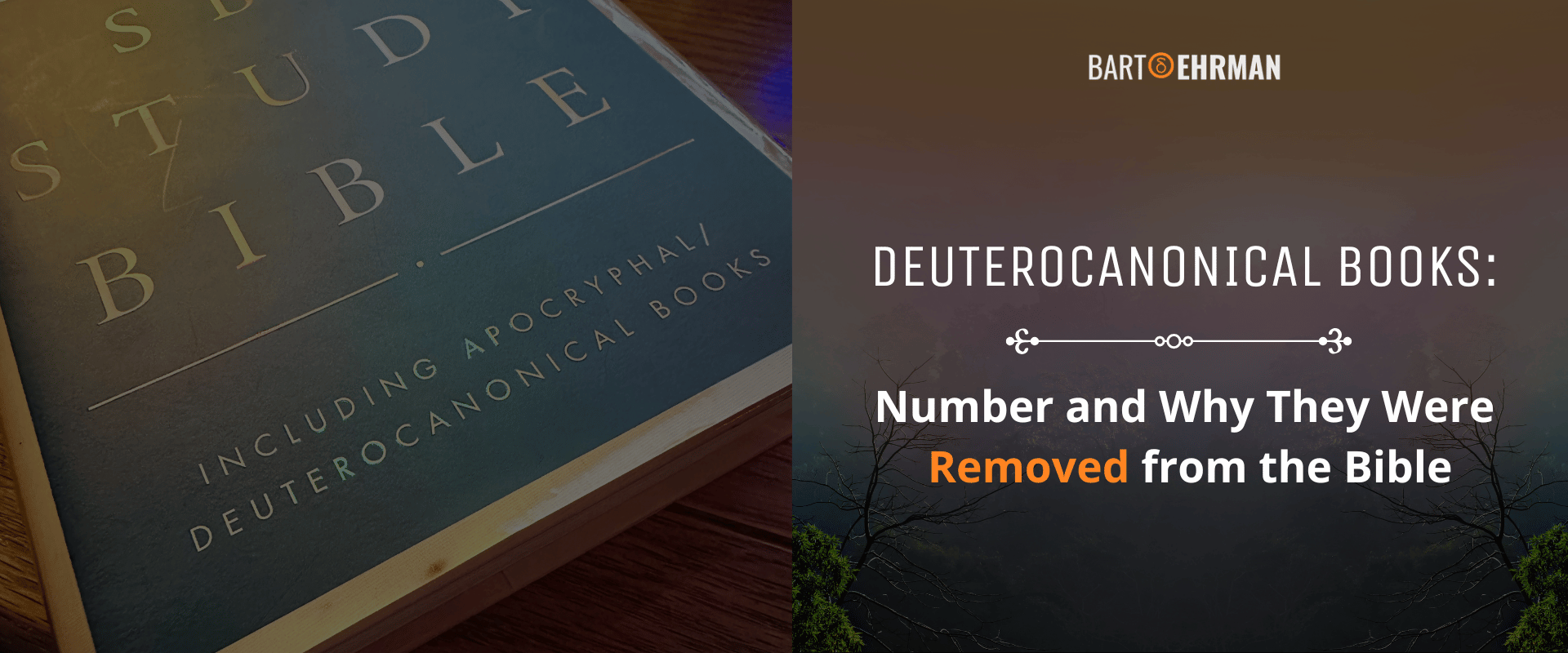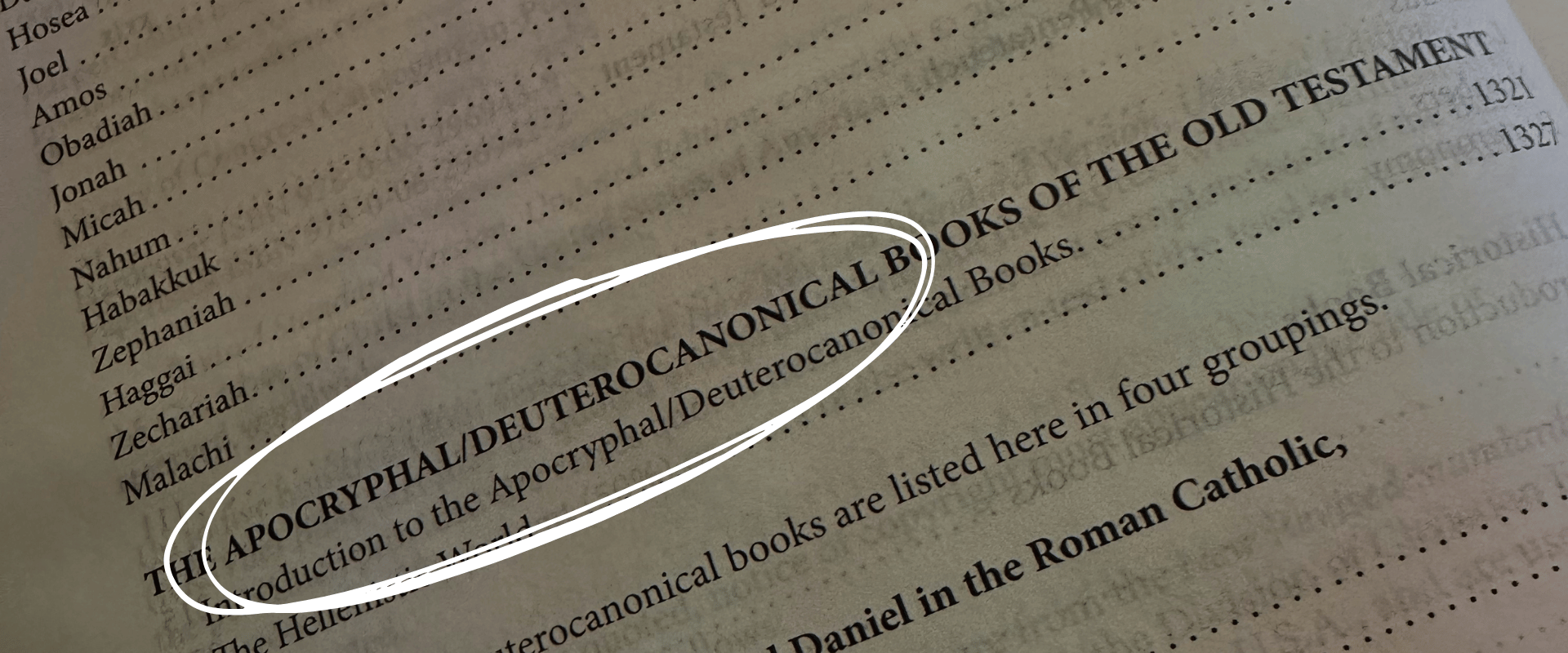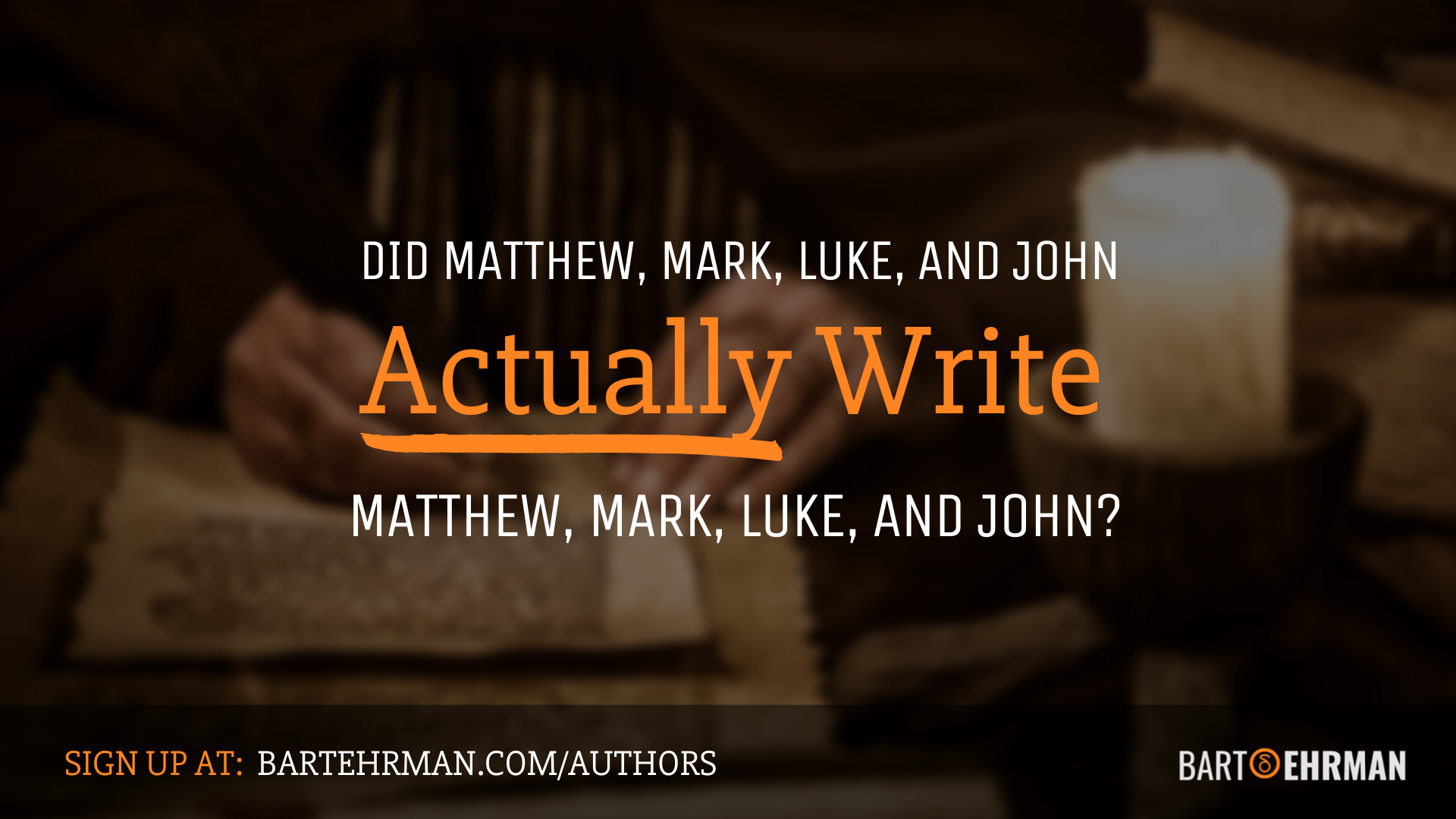Deuterocanonical Books: Number and Why They Were Removed from the Bible

Written by Marko Marina, Ph.D.
Author | Historian
Author | Historian | BE Contributor
Verified! See our guidelines
Verified! See our editorial guidelines
Date written: November 2nd, 2024
Edited by Laura Robinson, Ph.D.
Disclaimer: The views and opinions expressed in this article belong to the author and do not necessarily match my own. - Dr. Bart D. Ehrman
The Bible is a vast collection of writings that span many centuries, cultures, and perspectives. From the epic tales of the ancient patriarchs to the thought-provoking parables of Jesus, its stories have captured people's imaginations for millennia.
Beyond the stories, however, lies a more complex truth: the Bible is not a singular, unified book but rather a compilation of different works, each written by various authors with unique theological insights. These authors, living in distinct socio-political contexts, shaped their writings to address the concerns of their time.
As with any anthology, the formation of the Bible was a gradual and contested process, one that took shape over many centuries. Some texts were embraced as sacred scripture, while others were set aside, and eventually excluded from the canonical Bible as we know it today.
Among those excluded writings are the Deuterocanonical books — works that once held significant authority in many religious communities but were later removed from the Hebrew Bible and, eventually, from Protestant versions of the Old Testament.
Why were these books, which were revered by some and rejected by others, left out? What exactly are the Deuterocanonical books, and how did different traditions come to such varying conclusions about their place in the Bible?
In this article, we’ll explore the fascinating history behind the canonization of the Bible, focusing on the socio-political forces that shaped the creation of these texts and the reasons why certain groups ultimately excluded them.
We’ll also examine the Catholic Church’s perspective on these books, their theological importance, and how various opinions on the number of Deuterocanonical books (7, 10, or 12) contribute to ongoing debates over their number.
By the end, we hope to unravel the mystery surrounding these ancient writings and their journey from being part of the sacred canon to being relegated to the margins of the Bible. Let's dive into the story of the Deuterocanonical books!
But, wait a second! Before we immerse ourselves into the world of early Christianity, I want to invite you to join Bart D. Ehrman’s excellent course titled “In the Beginning: History, Legend, and Myth in Genesis.”
In it, Dr. Ehrman provides a scholarly analysis of the Book of Genesis, analyzing some of its most fascinating stories and providing a clear line between authentic history and mythology.

Canonization of the Bible
Each journey into the fascinating world of the Deuterocanonical books must start with the issue of the emergence of the canon of Scripture.
Understanding how certain books were included — and why others were excluded — gives us a clearer picture of the historical forces at play in shaping the Bible as we know it today.
The Emergence of the Hebrew Bible
The canonization of the Hebrew Bible, for instance, took a distinct path, influenced both by internal tradition and external pressures. As J. A. Sanders notes: “This process wasn't formalized by an official council but emerged organically within Jewish communities based on sociopolitical factors and community needs.”
(Affiliate Disclaimer: We may earn commissions on products you purchase through this page at no additional cost to you. Thank you for supporting our site!)
By the 1st century C.E., the Second Temple period literature suggests that there was a consensus about a three-part Jewish canon — Torah, Prophets, and Writings — although this canon was still quite fluid.
Writing at the end of the 1st century, Josephus, in his work Against Apion, asserts: “We do not possess myriads of inconsistent books, conflicting with each other. Our books, those which are justly accredited, are but two and twenty, and contain the record of all time.”
While Josephus doesn’t specify the books, scholars such as Lee M. McDonald speculate that they likely included the five books of Moses, the historical books from Joshua to Kings, and the Psalms.
The destruction of the Jerusalem Temple in 70 C.E. was a pivotal moment in Jewish history. Without the Temple, Judaism became more centered on its sacred texts, and the Pharisaic tradition became the dominant force shaping the religion.
By the 2nd century, the Jewish canon was largely fixed, with the number of compositions set at 24 (or 22, depending on how some books were grouped). The rise of Christianity and the early Christians' use of the Greek Old Testament known as Septuagint (which included the Deuterocanonical books) further solidified the boundaries of what constituted normative Judaism.
Deuterocanonical Books and the Emergence of the Christian Canon
Canonization within Christianity followed a more rapid, and arguably more turbulent, trajectory. Early Christian communities naturally began collecting and exchanging letters, including the four Gospels. However, by the middle of the 2nd century, debates about Christian identity forced a clearer definition of authoritative writings.
On one side, figures such as Marcion sought to limit the Christian canon, accepting only Luke’s Gospel and the Pauline epistles.
On the other side, Gnostic groups pushed for the inclusion of an even wider array of texts, including writings such as the Gospel of Judas. As Bart D. Ehrman explains: “The battle for scripture really was a battle — a conflict among competing groups of Christians intent on determining the nature of Christianity for all posterity.”
It’s true, early Christian leaders weren’t exactly sipping tea while deciding which books to include. In contrast, they were embroiled in a full-on struggle for, to use Paul Veyne’s term, “l’impérialisme de leur vérité” (“the imperialism of their truth”).
In any case, by the late 2nd century, Bishop Irenaeus had devised a threefold strategy for defining Christianity: The rule of faith, the canon of Scripture, and apostolic succession.
By the end of the 4th century, most of the Christian canon was in place, though there were still disputes over certain books, such as Revelation. Even today, different Christian denominations hold slightly different versions of the canon.
As we shift our focus to the Deuterocanonical books specifically, one might ask: Why were the Deuterocanonical books removed, and by whom? Let’s explore this intriguing part of biblical history in the next section.
Deuterocanonical Books: Etymology, History, and Significance
Each journey into the fascinating world of the Deuterocanonical books begins with understanding what these texts actually are.
The term “Deuterocanonical” (from the Greek deutero, meaning “second”, and canon, meaning “rule” or “measure”) refers to those books that were included in the Septuagint, the Greek version of the Hebrew Scriptures, but were later excluded from the Jewish canon and, subsequently, from many Protestant versions of the Old Testament.
The Deuterocanonical books (bolded ones are part of the Catholic Bible!) usually include:
While Catholics and Orthodox Christians accept these books as part of the Old Testament, Protestants label them as “Apocrypha,” meaning “hidden” or “obscure.” This distinction between “Deuterocanonical” and “Apocryphal” may seem subtle, but it carries significant theological weight.
The term “Deuterocanonical” preserves the books' value within Christian tradition, particularly in the Catholic Church, which holds that these books, as stated in the Catechism, are as equally inspired as the rest of the books in the Bible.
Did You Know?
Books on Fire: The Catholic Church’s Fiery Battle Against Heresy
While the Catholic Church held sacred scripture and the tradition of writing in high esteem, that didn’t stop it from going ballistic against books perceived as dangerous and heretical. During the Counter-Reformation, the Church created the Index Librorum Prohibitorum in 1559, a list of books Catholics were forbidden to read.
The Church didn’t just wag its finger at these works. Many of them ended up in spectacular public bonfires! Protestant works, such as those by Martin Luther, John Calvin, and even scientific writings, were rounded up and set ablaze to “protect” the faithful from ideas that might, shall we say, spark a little too much “different” thinking.
In cities such as Venice and Madrid, entire piles of "heretical" books were burned with great ceremony. One famous example occurred in 1559 when the auto-da-fé (acts of faith) in Valladolid not only condemned heretics but also sent entire collections of banned books to the flames. These fiery spectacles were meant to reinforce Church control, but they also became quite the public event — a grim reminder that challenging the Church could be dangerous for libraries!
The Church maintained the Index Librorum Prohibitorum until 1966, when it was officially abolished by Pope Paul VI, although it had become largely symbolic by that time.
By contrast, as Lee M. McDonald notes, Protestants use the term “Apocrypha” to downplay or even dismiss these books' historical and theological significance, subtly pushing them to the margins of sacred scripture.
The word “Apocrypha” comes from the Greek “apokryphos,” meaning “hidden away.” Originally, this term didn’t have the negative connotation it later took on in the Protestant tradition. However, during the Reformation, Martin Luther and other reformers sought to return to what they considered the “pure” Hebrew Bible, rejecting any texts not written in Hebrew.
By labeling these books as “Apocrypha,” they reduced their authority. In fact, Luther himself remarked that while these books are “useful and good to read,” they are not of the same status as the Hebrew scriptures. He saw them as edifying but not inspired by the Holy Spirit in the same way as the rest of the Old Testament.
Why Were the Deuterocanonical Books Removed?
The roots of the Deuterocanonical books trace back to the period before and after the establishment of Christianity. Early Christians, especially Greek-speaking ones, used the Septuagint as their scriptures.
At this point, the Jewish canon was still somewhat fluid, and various Jewish communities in the Diaspora accepted different texts.
Some of these communities embraced texts such as 1 and 2 Maccabees, which were written in Greek and reflected the historical struggles of the Jewish people under Hellenistic rule. However, when rabbinic Judaism began solidifying its canon after the destruction of the Second Temple in 70 C.E., the Greek texts were excluded.
The reasons for this exclusion are complex. As Alison G. Salvesen explains: “The reasons for eventual Jewish rejection of such books may include a recognition of their late date of composition, the lack of a known Semitic text, and obvious historical or legal contradictions.” Josephus, for instance, believed that only books written by prophets should be included in the sacred canon.
The Deuterocanonical books, many of which were written in Greek, didn’t meet this prophetic standard, nor did they align with the Pharisaic emphasis on Hebrew-language texts. As a result, they were left out of the Jewish canon, which was eventually fixed at 24 or 22 books (depending on the way you group these texts).
However, unlike their Jewish counterparts, early Christians continued to include Deuterocanonical books. The Catholic Church, whose institutional framework was firmly established in the post-Constantine era, kept these books as part of its Bible.
Again, Salvesen explains: “For many Christian authorities, the criterion for a book’s inclusion in the canon depended not on the language of composition, but on whether it was normative and authoritative for doctrine and public reading.”
While there was a certain amount of fluidity during the Middle Ages, the canon of the Catholic Bible was firmly fixed and officially accepted at the Council of Trent in the 16th century and it included the seven Deuterocanonical books. That brings us to the emergence of the Protestant Reformation.
Why were the Deuterocanonical books removed from Protestant Bibles? When reformers like Luther and Calvin began revising the Christian Bible, they, too, sought a return to what they believed to be the original Hebrew canon.
For them, the Old Testament should only contain books that were part of the Hebrew Bible, which meant the Deuterocanonical books had to go.
Thus, in Protestant Bibles, we often find the Old Testament, the New Testament, and the Apocrypha, a section that includes books such as Tobit, Judith, and 1 and 2 Maccabees.
The creation of this category during the Reformation reflects the reformers' attempt to respect these ancient writings while reaffirming their commitment to sola scriptura — scripture alone, as defined by the Hebrew canon.

How Many Deuterocanonical Books Are There?
The question of how many Deuterocanonical books exist may seem straightforward, but the answer varies depending on which tradition you consult. In Catholic Bibles, the most commonly cited number is seven. These seven Deuterocanonical books are Tobit, Judith, Wisdom of Solomon, Ecclesiasticus (Sirach), Baruch, and 1 and 2 Maccabees.
However, this number increases when we account for additional material found within some of the canonical books. For instance, Catholic Bibles include expanded portions of Esther and Daniel.
The additions to Esther include prayers and other passages not found in the Hebrew version, while Daniel includes the Prayer of Azariah, Susanna, and Bel and the Dragon. When these extended versions are counted separately, the total rises to around 10 or 12, depending on how the books are grouped.
Meanwhile, the Orthodox tradition often includes additional texts such as 3 Maccabees and Psalm 151, further increasing the number.
The confusion over the number of Deuterocanonical books, therefore, stems from the varied ways these texts have been viewed, categorized, and included (or excluded) in different traditions.
What remains consistent, however, is that these books held significant religious, historical, and cultural value in the Christian tradition — no matter their canonical status.
Conclusion
The journey of the Deuterocanonical books, from being included in the Septuagint to their exclusion in various Jewish and Protestant canons, highlights the dynamic and evolving nature of biblical scripture.
These texts, though sidelined by some traditions, remain integral to the Catholic and Orthodox Christian faiths, where they continue to be valued for their theological insights and historical significance.
The differences in the total number of the books — whether seven, ten, or twelve — illustrate the complexity of the canonization process, shaped by both religious convictions and socio-political contexts.
Ultimately, the Deuterocanonical books stand as a testament to the rich diversity within the biblical tradition. While their canonical status may vary across Christian denominations, their influence on the history of theology and biblical interpretation is undeniable.
FREE COURSE!
WHY I AM NOT A CHRISTIAN
Raw, honest, and enlightening. Bart's story of why he deconverted from the Christian faith.
Over 6,000 enrolled!

